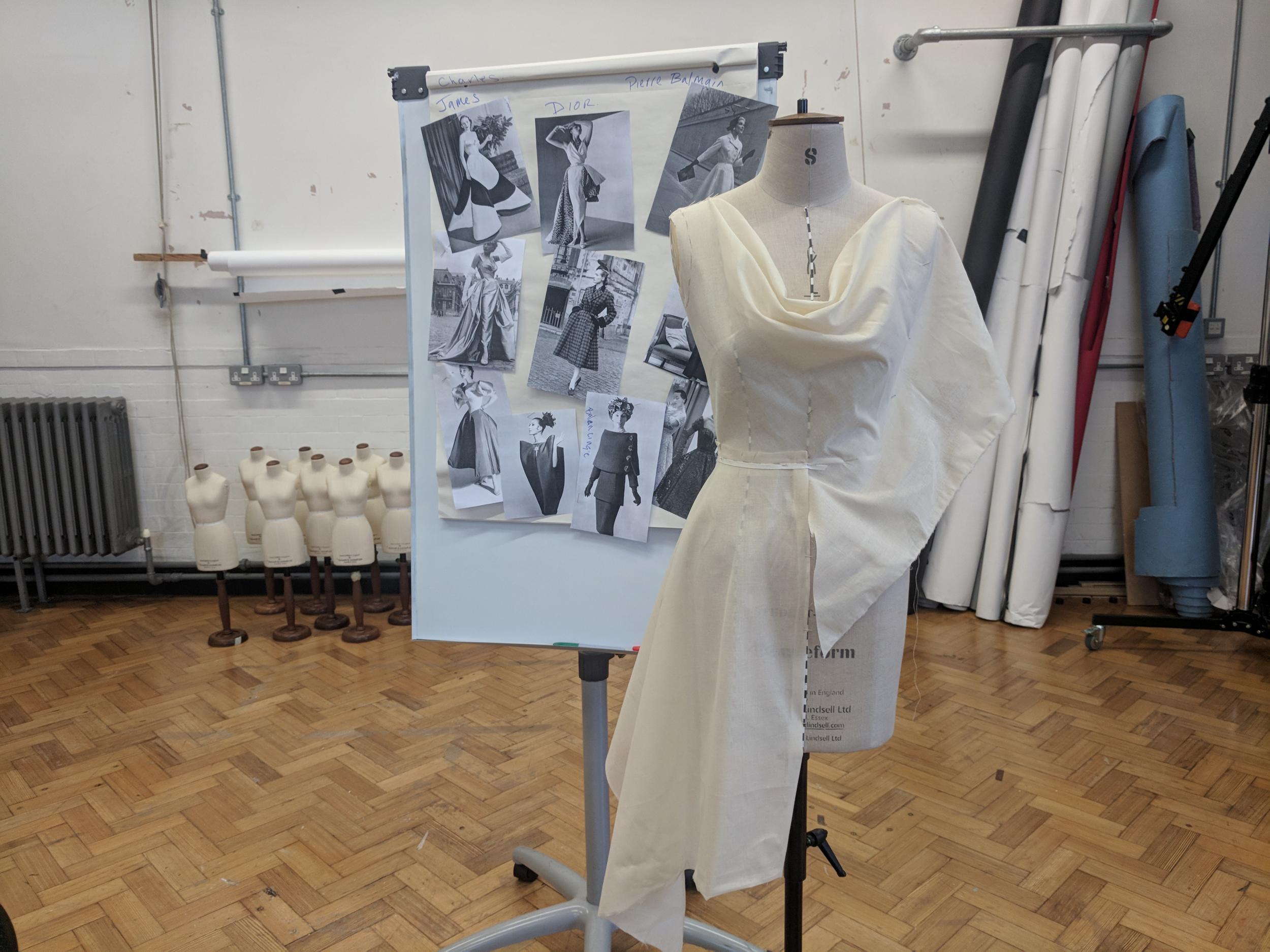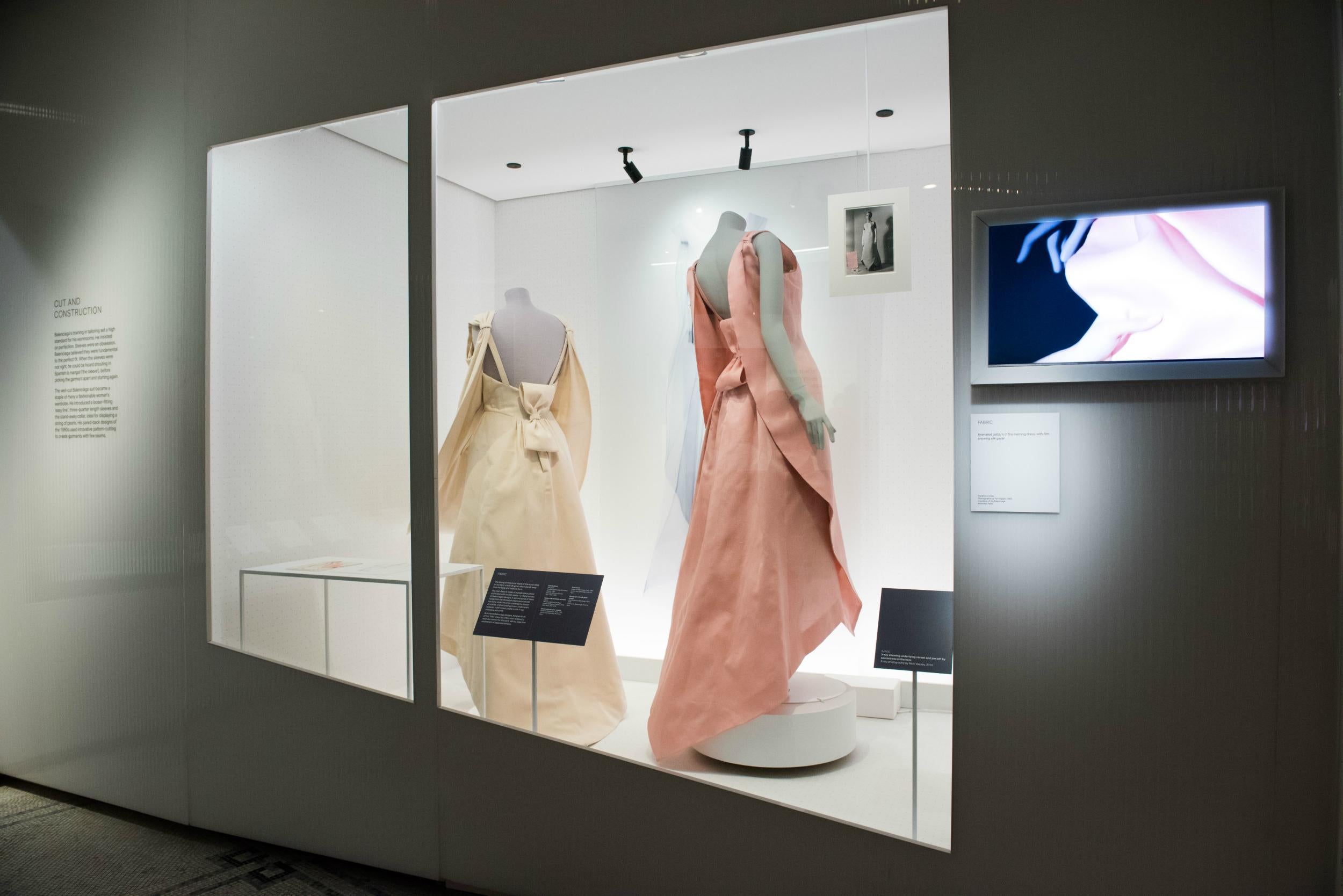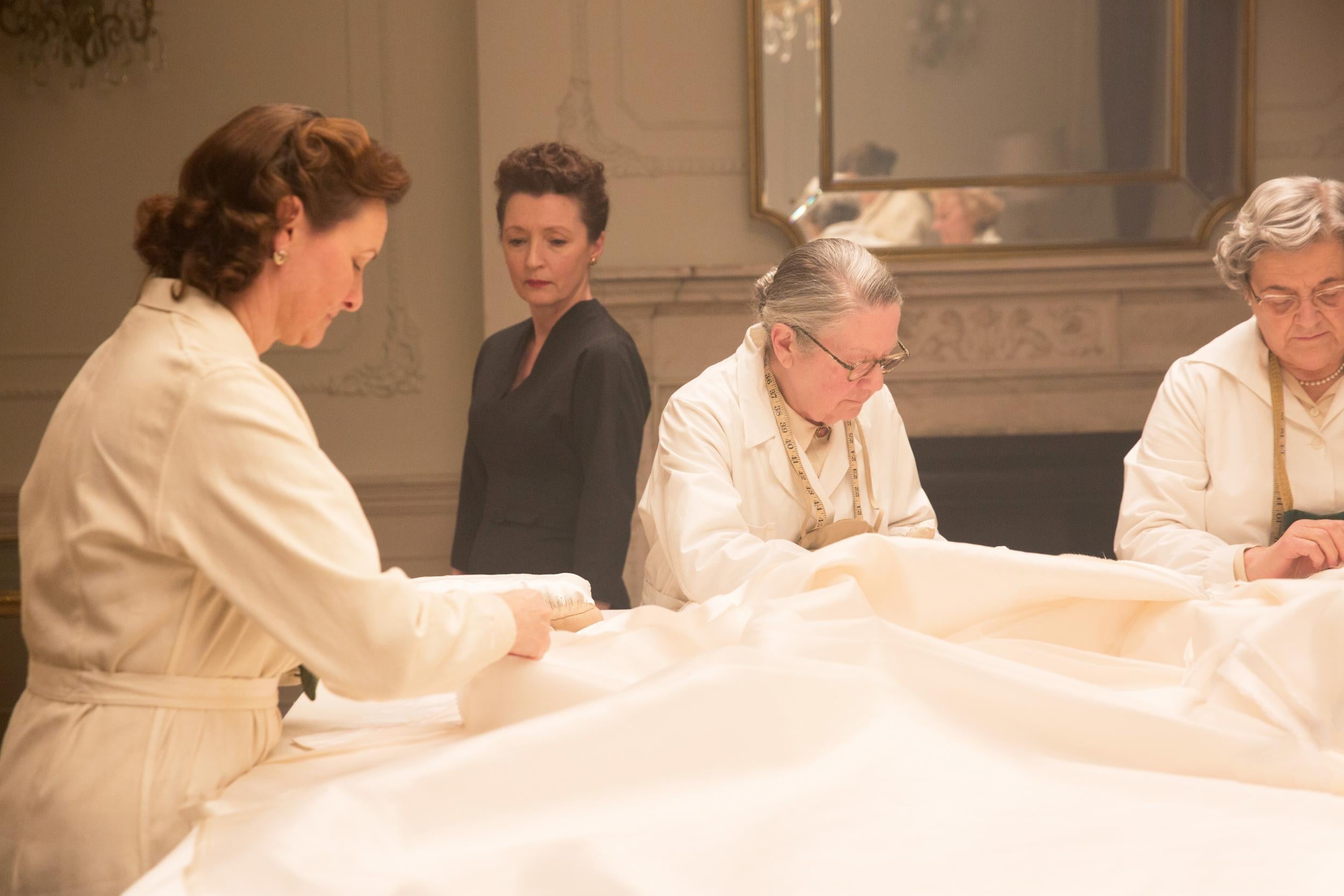Phantom Thread: How Daniel Day-Lewis’ final role reflects fashion’s cruel genius
His character provides a fascinating look into the personalities couture demands from its talents

Your support helps us to tell the story
From reproductive rights to climate change to Big Tech, The Independent is on the ground when the story is developing. Whether it's investigating the financials of Elon Musk's pro-Trump PAC or producing our latest documentary, 'The A Word', which shines a light on the American women fighting for reproductive rights, we know how important it is to parse out the facts from the messaging.
At such a critical moment in US history, we need reporters on the ground. Your donation allows us to keep sending journalists to speak to both sides of the story.
The Independent is trusted by Americans across the entire political spectrum. And unlike many other quality news outlets, we choose not to lock Americans out of our reporting and analysis with paywalls. We believe quality journalism should be available to everyone, paid for by those who can afford it.
Your support makes all the difference.Art has always been interlinked with obsession, with control.
Yet when Paul Thomas Anderson sought a home for his own tale of male genius unspun, it was the world of fashion that offered up the ideal stage; for a battleground, of sorts, between cantankerous dressmaker Reynolds Woodcock (Daniel Day-Lewis) and his muse Alma (Vicky Krieps).
He is a man who stands with his greatest mastery when carefully draping silk on the female form. She seeks to find the subversion in his personality that will finally give her the upper hand.
The fact that Phantom Thread’s tale of vicious love is set in a couture house only became fully clear to me after a visit to London College of Fashion. What began as an introduction to its basic techniques, specifically in the draping of fabric on a mannequin to first materialise the shape of a garment, slowly morphed into an awakening of just how much the craft demands of its creators.
Utterly all-consuming in its nature, so threatened with unfulfilment – it’s no surprise to discover that Reynolds may only have half a mind, and half a heart, to offer Alma.
The precision is maddening. Even the simplest of dress shapes still requires a deft touch, folding woven fabrics along their bias – the most elastic, malleable of edges – and then carefully pinning them to a mannequin in a way that aligns with the natural curves of the body. To hug the form, but not to suffocate it. A single edge not in its correct, logical place, and the whole creation suddenly looks lopsided. Take everything apart. Start again, from the beginning. I pinned and unpinned the bodice so many times, it felt like I’d no longer understand perfection if I ever even saw it.

“What other kind of personality other than Reynolds’ could actually thrive under such circumstances?” – that’s what my parting thoughts of the day came down to. Anderson’s film finds the comedic in his male lead’s own rigorous fussiness, in his distaste for stodgy goods, or the fact that the sound of butter scraping on toast can sound like a gun going off in his brain. Reynolds, indeed, seems to operate on the same mindset both within, and outside of, his artistic works. He must have absolute control over fabric, over his environment, over the people in his life.
And it’s a control that never really seems to subside, as there’s an internal frustration to fashion that co-exists with its abundant creativity. As Jax Black, Senior Costume Technician at London College of Fashion, explains, true innovation in the business can often seem non-existent. Designers may make a determined search for the one, truly “new” look, yet that “new” look can seem utterly out of grasp in an art form so cyclical in nature.
You need only to look at the flow of 20th-century fashion: the tight waists and full skirts of the 1950s are snatched straight from a largely ignored period in WWI, in which dresses looked to retain their strict femininity, while also throwing out the impractical nature of the corset since women were now flocking into employment. The 1970s called back to the slinky cuts of the 1930s through the likes of Pucci and Laura Ashley, while the 1980s took on the padded shoulder trend of the 1940s, to reflect women gaining stature in the workplace.
This almost Sisyphean pursuit surely calls for only the most powerful of personalities, especially when such arduous practical demands also come into play. A couture dress, as Jax explains, can take 10 workers about six months to create; a time in which fixation and obsession seem only destined to grow.

Watch Apple TV+ free for 7 days
New subscribers only. £8.99/mo. after free trial. Plan auto-renews until cancelled

Watch Apple TV+ free for 7 days
New subscribers only. £8.99/mo. after free trial. Plan auto-renews until cancelled
To mutate, even, into something monstrous. And what occurs if the end result is anything less than perfect? There’s a telling scene in Phantom Thread, in fact, when Reynolds finally examines the piece created for one of his dearest, most high-profile clients. He takes one look at it, and is immediately repulsed.
The troublesome genius as evident in Anderson’s film does, pointedly, find reflection in the biographies of some of fashion’s greatest luminaries. It feels no mere coincidence that the V&A recently held a screening of Phantom Thread at the very same time as its exhibition on Cristóbal Balenciaga, the man described by Christian Dior as “the master of us all”. Mastery was as central to his life as it is to Reynolds’.
Balenciaga, like Reynolds, was the child of a seamstress, born in the Basque province of Gipuzkoa, and spent much of his childhood in his mother’s workroom as she created dresses for her private clients. One of them was Marques de Casa Torres, and by the time Balenciaga was in his teens, she had become his first client. While women were almost always taught to sew, the skill was a rarity amongst men. If a man was taught, it was usually for a specific purpose, which must have always embedded a little sense of predestination into their heads.
The designer’s perfectionism grew key to his talent, for his work has always been best known for its sense of absolute precision. His ‘tulip’ dress, for example, consists of a single piece of fabric laid completely flat at the front, but carefully fitted with a tight corset at the back to retain the wearer’s curves.

He was also famously particular about the fabrics he used, sometimes matching his own fabric colours by only utilising a few pieces of thread he’d picked up off the floor. He was a demanding, but close-working client for fabric manufacturers and was known for declaring: “It is the fabric that decides.”
Another clear source of inspiration for Anderson’s Reynolds is Charles James, a man also acclaimed for his eccentric personality, unorthodox methods, and structured approach to dressmaking.
He lacked formal training and so relied heavily on mathematical, sculptural, and architectural concepts in his designs; his work fluctuated between close-fitting dresses that hugged the body, others that idealised it through padding and draping, and some that turned the body into something utterly fantastical. At the height of his career, he was custom-fitting gowns for some of America’s most prominent women, from heiresses to journalists to entertainers.
James’s own perfectionism was well known, and mutated often into eccentricity. He was once so unsatisfied with one of his models that he dismissed her and simply wore the gowns himself to present at Bergdorf Goodman. At other times, he’d lock his staff in the studio overnight if he thought they weren’t working hard enough. He even refused to serve clients if he deemed them unattractive, telling one woman: “I couldn’t possibly make anything for a frump like you.”
The clients he accepted, however, adored him. But they proved not enough to sustain James’ career. His eccentricity became his own destruction, making him incompatible with the growing ready-to-wear industry. Like Reynolds, he probably thought the term “chic” was a “filthy little word”, but James’s focus on couture as a deific art was simply at odds with the industry’s reliance on broadening consumerism.

Combined with frequent litigations spawned from his spats with the companies he worked with and a general irresponsibility with his finances, James ended up spending the last 14 years of his life working from a small studio in the Chelsea Hotel, attended by only his most loyal friends, and a beagle named Sputnik.
Indeed, Phantom Thread’s vision of couture genius, the reclusive artist, has little place in modern fashion. Whatever may occur behind closed doors, we live now in the age of the celebrity designer; the showman, a kind which perhaps takes more cues from Christian Dior’s acute sense of professionalism (despite his notorious shyness).
While Balenciaga believed matters like bowing at the end of runway shows to be frivolous, Karl Lagerfeld is now a face so recognisable he can print it on his company’s own designs. It’s hard to imagine Reynolds Woodcock would react well to such news.
Phantom Thread is in UK cinemas now.